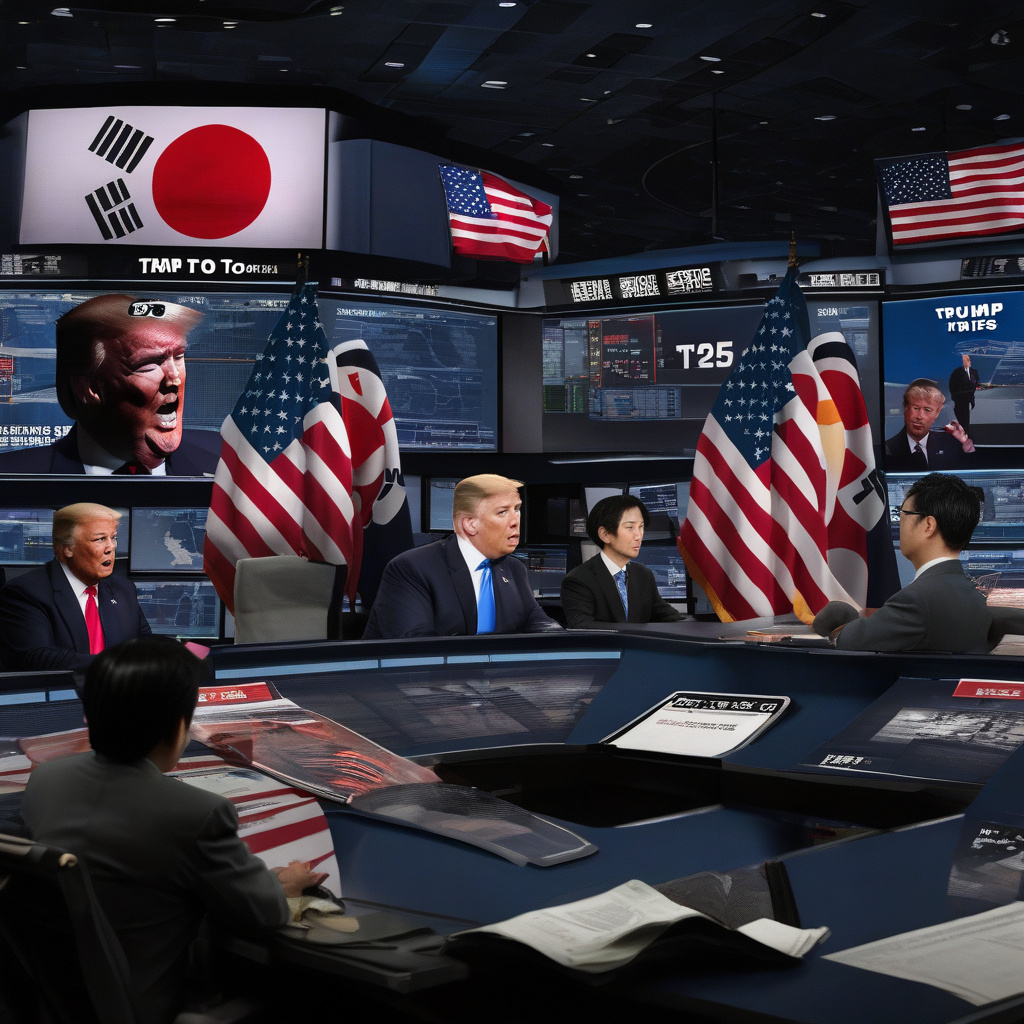Trump to Levy 25% Tariffs on Japan, South Korea in August
In a bold move that is sure to have significant global economic ramifications, President Trump has announced plans to impose 25% tariffs on imports from Japan and South Korea starting in August. This decision comes as part of the ongoing trade tensions between the United States and these two major Asian economies.
The 25% tariffs are not limited to specific sectors; however, it is worth noting that they do not include any sector-specific tariffs that the Trump administration may separately implement on goods imported in key industries. This broad approach to tariffs could potentially impact a wide range of products and industries, leading to higher prices for consumers and potential disruptions in supply chains.
The decision to levy these tariffs is likely to have far-reaching consequences for businesses in Japan and South Korea, as well as for American companies that rely on imports from these countries. Industries that could be particularly affected include automotive, technology, and manufacturing, among others.
One of the key arguments put forth by the Trump administration in favor of these tariffs is the need to address trade imbalances and protect American industries from what they perceive as unfair competition. By imposing tariffs on imports from Japan and South Korea, the administration aims to level the playing field and create a more favorable environment for domestic businesses.
However, critics of the tariffs argue that they could lead to a trade war that ultimately harms all parties involved. They warn that these tariffs could escalate tensions between the United States and its Asian allies, leading to retaliatory measures and further destabilizing the global economy.
It remains to be seen how Japan and South Korea will respond to these tariffs and what the broader implications will be for international trade. Both countries have expressed concerns about the potential impact on their economies and have signaled a willingness to explore diplomatic solutions to the trade dispute.
As businesses and policymakers prepare for the implementation of these tariffs in August, it is essential to carefully monitor developments and assess the potential risks and opportunities that may arise. The global economy is interconnected, and actions taken in one part of the world can have ripple effects that are felt far and wide.
In conclusion, the decision to levy 25% tariffs on imports from Japan and South Korea marks a significant development in the ongoing trade tensions between the United States and key Asian economies. The implications of these tariffs are complex and multifaceted, with potential consequences for businesses, consumers, and economies around the world. As the situation continues to evolve, it is essential for all stakeholders to stay informed and adapt to the changing landscape of international trade.
tariffs, Japan, South Korea, trade tensions, global economy












